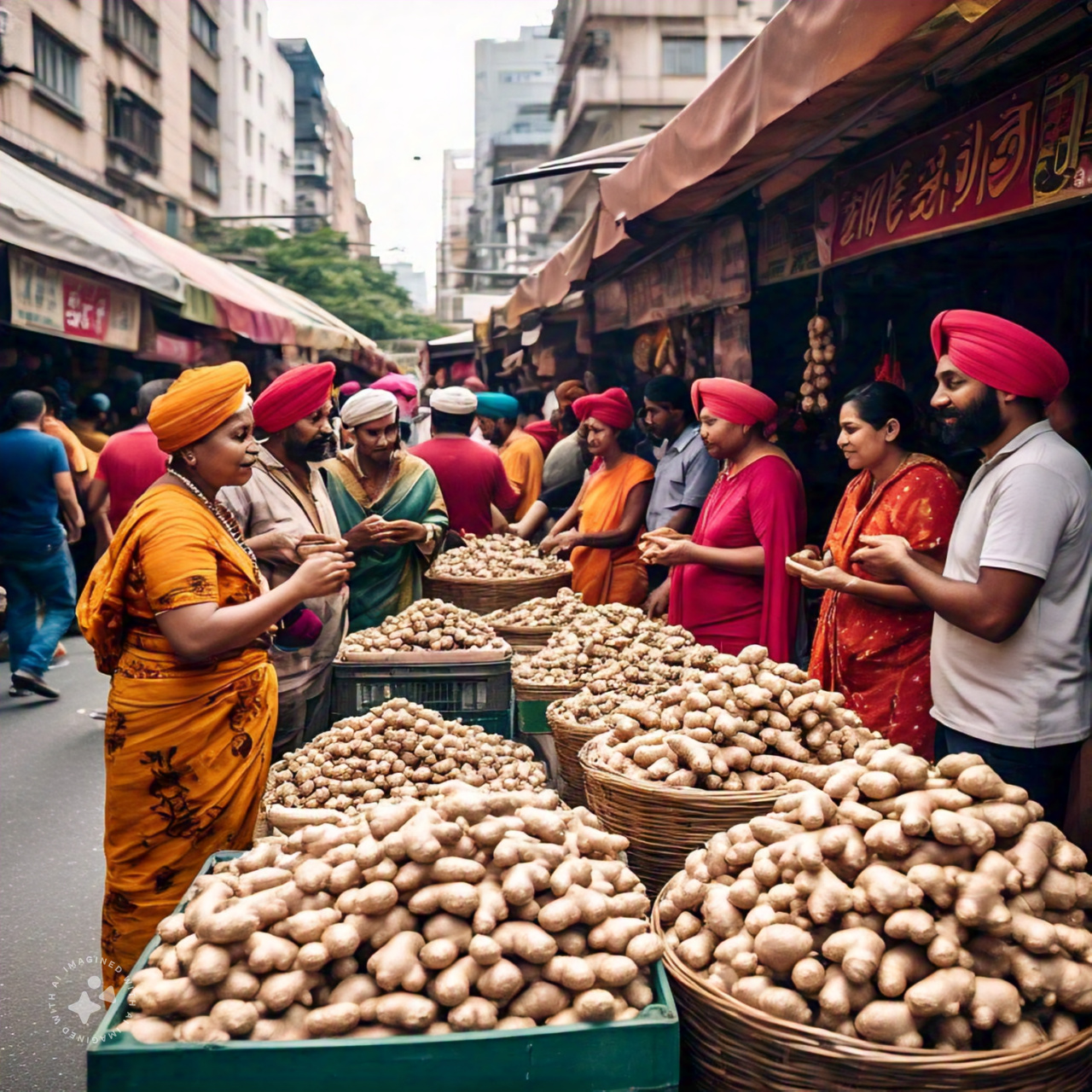
Global Ginger Market Analysis (2024-2033)
The Global Ginger Market is projected to grow from US$ 4.41 billion in 2024 to US$ 7.50 billion by 2033, expanding at a compound annual growth rate (CAGR) of 6.08% during the forecast period of 2025 to 2033. This growth is primarily driven by the increasing demand for ginger in the food and beverage, health products, and traditional medicine sectors. The rising preference for natural remedies and its expanding culinary applications are further accelerating the market’s growth.
Global Ginger Industry Outlook
Ginger, a tropical plant from the Zingiberaceae family, is known for its aromatic, spicy rhizome. Historically originating from Southeast Asia, ginger has been used for thousands of years in both culinary and medicinal contexts. It is available in various forms including fresh, dried, and powdered, and remains a popular ingredient in international cuisines such as Asian, Indian, and Middle Eastern dishes. Its diverse applications in curries, soups, teas, sauces, and even desserts underscore its importance in the global food industry.
Market Trends and Insights
Key Drivers of Market Growth:
Health and Wellness Awareness: As consumers become more health-conscious, the demand for natural and functional products like ginger is increasing. Ginger is widely recognized for its digestive, anti-inflammatory, and immune-boosting properties, which contribute to its growing use in health-focused products such as herbal teas, supplements, and natural remedies.
Rising Popularity in Culinary Applications: Ginger’s versatility in cooking continues to fuel its demand globally. Its application is expanding not just in traditional cuisines but also in fusion foods and innovative food products that align with changing global food trends. Ginger’s unique flavor and health benefits make it a key ingredient in dishes across multiple food segments.
Growing Demand for Functional Beverages: The increasing popularity of functional beverages, such as ginger-based drinks, is contributing significantly to the market’s expansion. Beverages like ginger ale, ginger beer, and ginger tea are becoming staples in both health-conscious diets and everyday consumption, especially in emerging markets where demand for herbal and functional drinks is rising.
Obstacles and Challenges in the Ginger Market:
Climate Change and Environmental Conditions: Ginger cultivation is highly sensitive to climatic conditions, requiring warm and humid climates. Climate irregularities such as higher temperatures, uneven rainfall, and natural disasters like floods and droughts pose a significant challenge, potentially affecting both production and quality.
Labor-Intensive Cultivation and Supply Chain Issues: Ginger farming is labor-intensive, with heavy reliance on manual labor for planting, harvesting, and processing. Labor shortages and rising wages, particularly in developing countries, add to the vulnerability of the market. Additionally, the perishable nature of ginger creates storage and transportation challenges, leading to price fluctuations and supply instability.
Regional Insights
United States Ginger Market:
The U.S. is the largest consumer of ginger, driven by increasing health awareness and the growing popularity of natural ingredients. Ginger-based products such as ginger tea, ginger ale, and functional supplements are gaining traction in the wellness and functional food sectors. Notable developments include the launch of premium black ginger extract by Nutraland USA, set for introduction at SupplySide West in Las Vegas in October 2024.
Germany Ginger Market:
Germany is one of Europe’s largest markets for ginger. With rising consumer demand for natural remedies and functional foods, ginger-based products such as teas, energy drinks, and supplements are gaining popularity. The country’s strong organic food market, which includes organic ginger, supports this demand.
India Ginger Market:
India stands as the world’s largest producer and consumer of ginger. Beyond its culinary importance, ginger is a cornerstone of Ayurvedic medicine, driving domestic demand. India’s ginger exports continue to grow, with international markets increasingly seeking Indian ginger for its flavor and medicinal benefits.
Brazil Ginger Market:
Brazil is a significant player in the Latin American ginger market due to its favorable agricultural climate. The country’s growing awareness of ginger’s anti-inflammatory and digestive properties is driving demand, especially for ginger-based beverages like ginger beer.
Egypt Ginger Market:
Ginger’s popularity in Egypt is rising, particularly in traditional medicine and herbal teas. As consumers become more health-conscious, the demand for ginger-based products such as supplements and herbal teas is expected to increase across the MENA region.
Product Breakdown:
Fresh Ginger
Dried Ginger
Preserved Ginger
Pickled Ginger
Crystallized Ginger
Powdered Ginger
Other Ginger Products
New Publish Reports
United States Frozen Food Market
United States Fast Food and Quick Services Restaurants Market
Market Segmentation by Region:
North America: United States, Canada
South America: Mexico, Brazil, Argentina, Colombia
Europe: United Kingdom, Germany, France, Italy, Spain, Netherlands
Asia Pacific: China, Japan, India, South Korea, Indonesia, Malaysia, Australia
Middle East & Africa: United Arab Emirates, Israel, South Africa
Rest of the World
Competitive Landscape
Some key players in the global ginger market include:
Archer Daniels Midland Company
Kerry Group
Olam International Limited
CHS Inc
Nestle SA
McCormick & Co. Inc
The Ginger People
Conclusion
The Global Ginger Market is poised for robust growth, driven by its increasing use in health-conscious products, culinary innovations, and functional beverages. However, challenges related to climate change, labor-intensive cultivation, and supply chain disruptions remain critical factors influencing market dynamics. As health awareness and consumer demand for natural remedies continue to rise, the ginger market is expected to maintain its upward trajectory over the coming years.